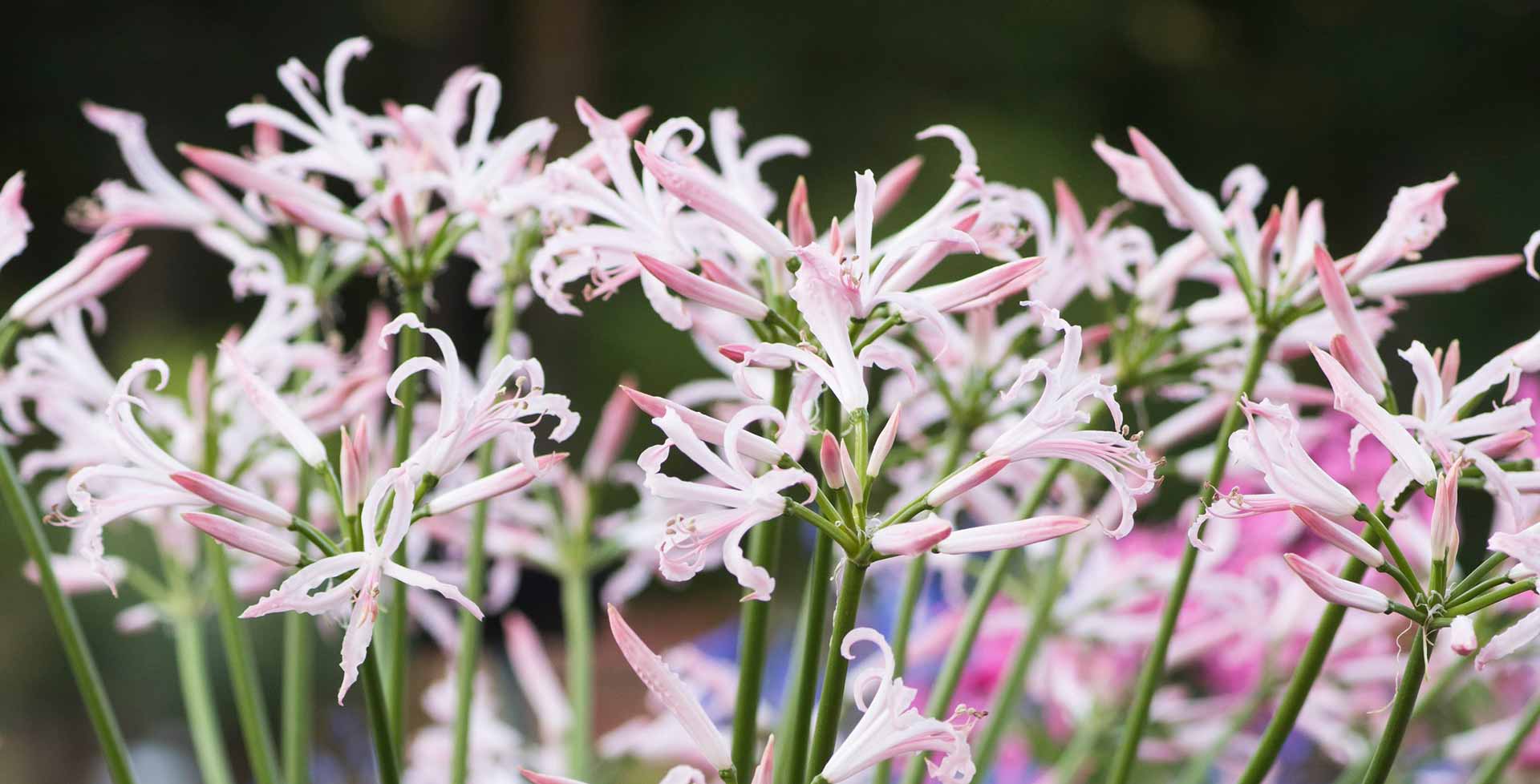
Introducing...
Nerine
Common name: Guernsey lily
Flowering in early to mid-autumn, hardy nerine offer starry pink and white blooms that are invaluable bulbs for bringing late colour to the garden. Frost-tender types need winter protection but provide equally vibrant blooms so can add panache to your greenhouse and conservatory displays in October and November.
Looks
The flowers are glistening reds, whites and pinks, depending on the cultivar. Each bloom can reach 4cm (1½in) across and has prominent, filament-like long stamens. The flowers are grouped together to form domed flower heads, which are produced in autumn before the foliage appears. The narrow strap-shaped leaves of about 45cm (18in) in length are produced in winter after the flowers, dying back in summer.
Likes
All like warm, toasty conditions. Nerine sarniensis (Guernsey lily) need a frost-free greenhouse or conservatory with a minimum winter temperature of 7°C (45°F). For hardy-types (Nerine bowdenii and cultivars), they are happy at the base of a sunny, south-facing wall in well-drained soil.
Dislikes
Shade will prevent the bulbs from growing sufficiently for flowering. Poorly drained soil or compost can cause the roots to rot. Tender forms are easily frosted, so need the protection of a greenhouse or conservatory in winter.
Did you know?
The scarlet flowered Nerine sarniensis is commonly named the Guernsey lily. However, although it has been growing wild on Guernsey for 350 years, no-one knows how it came to be there as it is actually native to the cape of South Africa.
Growing guide

How to grow nerines
All the information you’ll need to grow & care for nerines in your garden.
Nerines we recommend
Nerine bowdenii 'Ostara'
Bowden lily 'Ostara'
- 0.1–0.5 metres
- 0–0.1 metre
Nerine bowdenii 'Ostara'
Bowden lily 'Ostara'
- 0.1–0.5 metres
- 0–0.1 metre
Useful advice
Plant viruses
Mealybug (Glasshouse)
Get involved
The Royal Horticultural Society is the UK’s leading gardening charity. We aim to enrich everyone’s life through plants, and make the UK a greener and more beautiful place.